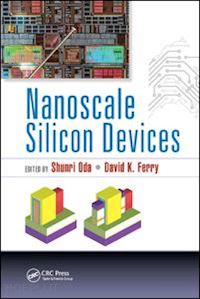Is Bigger Always Better? Explore the Behavior of Very Small Devices as Described by Quantum Mechanics Smaller is better when it comes to the semiconductor transistor. Nanoscale Silicon Devices examines the growth of semiconductor device miniaturization and related advances in material, device, circuit, and system design, and highlights the use of device scaling within the semiconductor industry. Device scaling, the practice of continuously scaling down the size of metal-oxide-semiconductor field-effect transistors (MOSFETs), has significantly improved the performance of small computers, mobile phones, and similar devices. The practice has resulted in smaller delay time and higher device density in a chip without an increase in power consumption. This book covers recent advancements and considers the future prospects of nanoscale silicon (Si) devices. It provides an introduction to new concepts (including variability in scaled MOSFETs, thermal effects, spintronics-based nonvolatile computing systems, spin-based qubits, magnetoelectric devices, NEMS devices, tunnel FETs, dopant engineering, and single-electron transfer), new materials (such as high-k dielectrics and germanium), and new device structures in three dimensions. It covers the fundamentals of such devices, describes the physics and modeling of these devices, and advocates further device scaling and minimization of energy consumption in future large-scale integrated circuits (VLSI). Additional coverage includes: Physics of nm scaled devices in terms of quantum mechanics Advanced 3D transistors: tri-gate structure and thermal effects Variability in scaled MOSFET Spintronics on Si platform NEMS devices for switching, memory, and sensor applications The concept of ballistic transport The present status of the transistor variability and more An indispensable resource, Nanoscale Silicon Devices serves device engineers and academic researchers (including graduate students) in the fields of electron devices, solid-state physics, and nanotechnology.











